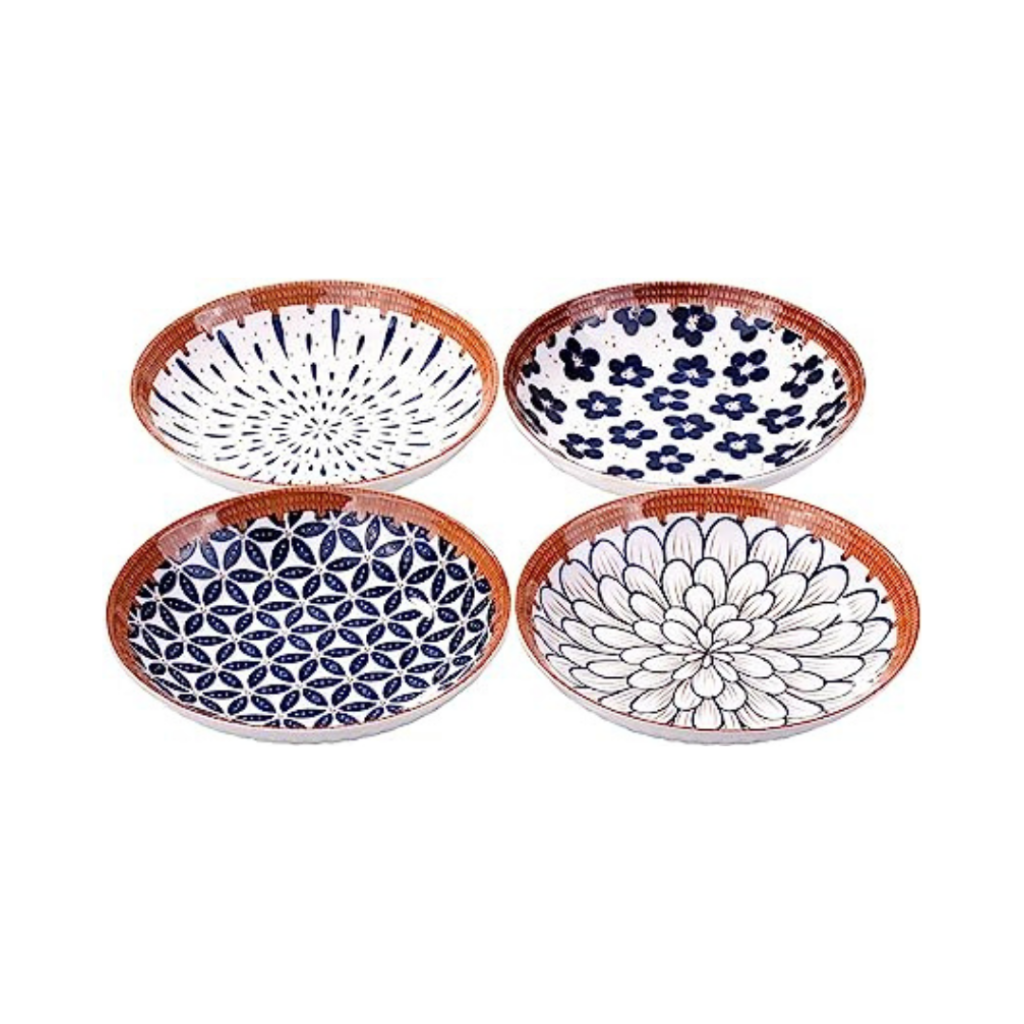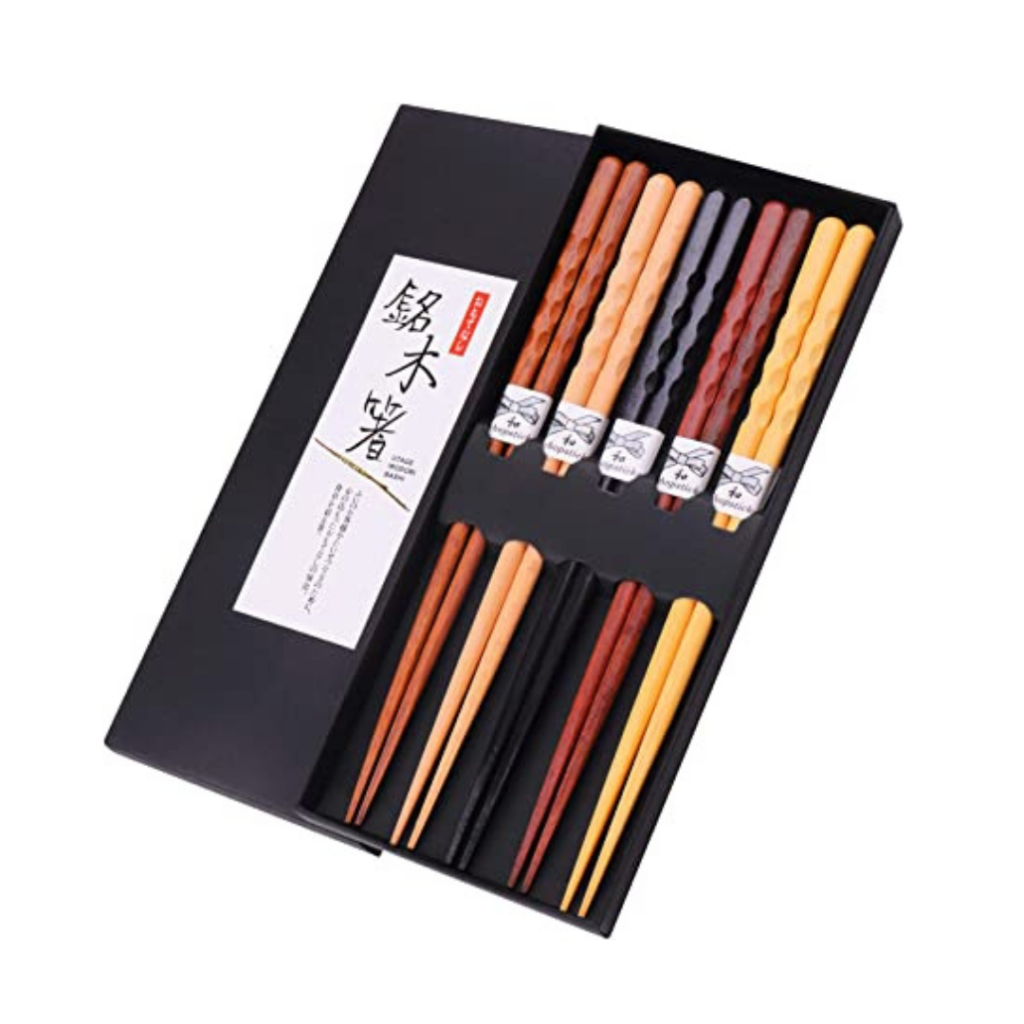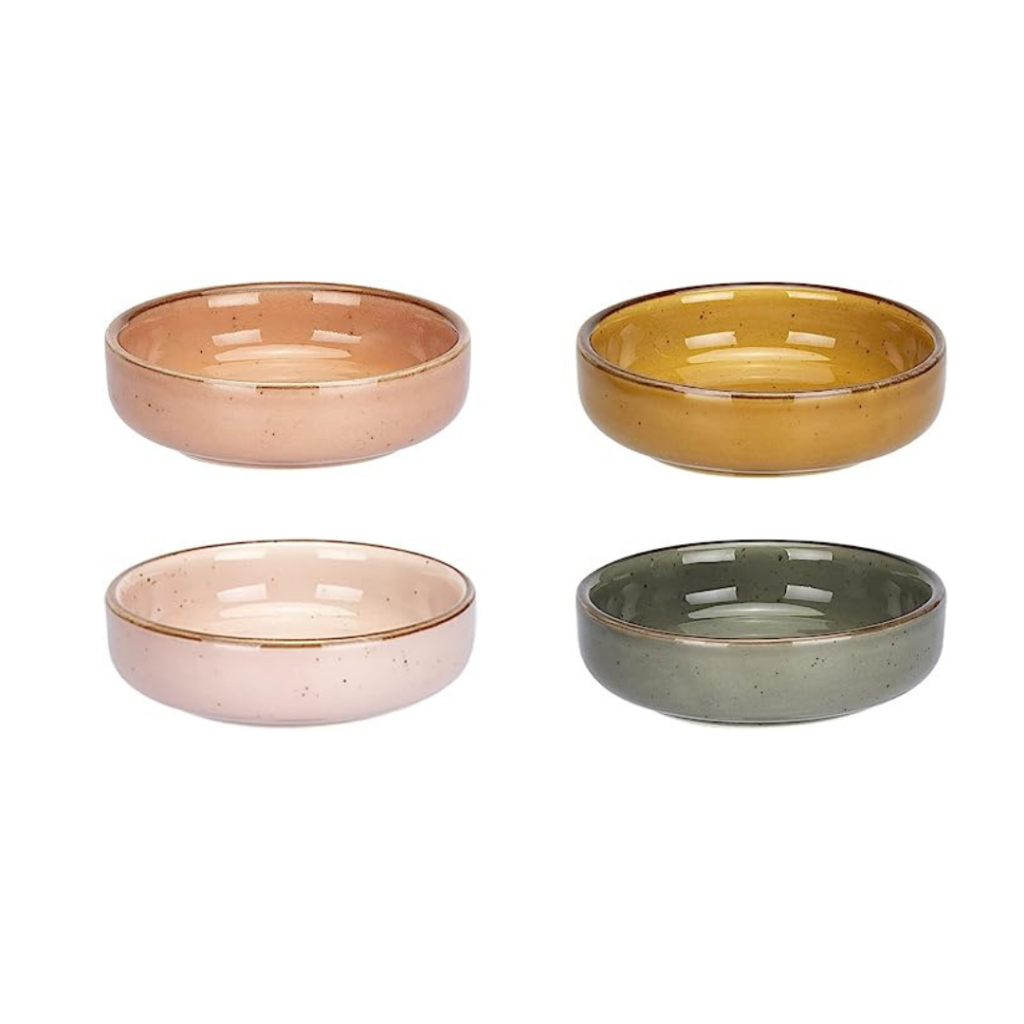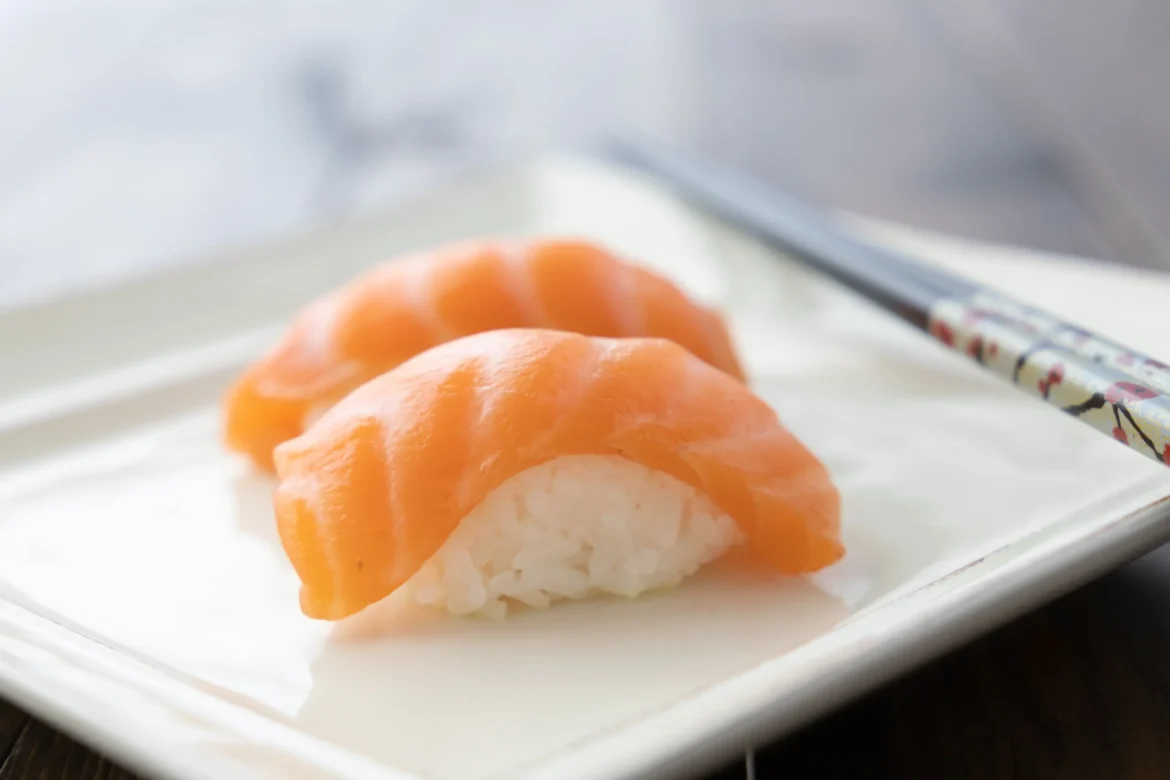Welcome to the world of sashimi! If you’re a seafood lover or a foodie in search of new and exciting culinary experiences, then you’re in for a treat. Sashimi is a quintessential Japanese dish that has gained immense popularity all around the world for its freshness, delicate taste, and unique preparation. For centuries, sashimi has been a staple of Japanese cuisine and a symbol of their culture and traditions. In this article, we will take you on a journey to explore the 10 most popular sashimi varieties and provide you with some insights into the culture and history behind this mouth-watering delicacy. So sit back, relax, and get ready to tantalize your taste buds with the raw and delicious world of sashimi!
10 Most Popular Sashimi Varieties
11Maguro (Tuna)
So if you’re a fan of sashimi, you must have heard of maguro sashimi. Maguro, also known as bluefin tuna, is one of the most popular types of sashimi varieties that you’ll find in most Japanese restaurants. When they serve you as sashimi, maguro is cut into thin, rectangular slices that showcase its deep red color and beautiful marbling. As for the texture, maguro sashimi is tender and velvety, with a buttery mouthfeel that just melts in your mouth. When it comes to different cuts of maguro sashimi, there are several varieties to choose from, each with its own unique flavor profile. For instance, the leaner akami cut has a slightly firm texture and a mild, meaty flavor, while the fattier toro cut is buttery and rich, with a luxurious mouthfeel that often compare to foie gras.
Where to try maguro sashimi varieties
If you’re looking for the ultimate maguro sashimi experience, there are a few places that you should definitely check out. One of my personal favorites is the Tsukiji Fish Market in Tokyo, Japan. This market is one of the largest and most famous fish markets in the world, and it’s home to some of the freshest and highest-quality maguro sashimi you’ll ever taste.
10Hamachi (Yellowtail)
Let’s talk about one of the most popular types of sashimi out there: Hamachi, also known as yellowtail. Often they serve hamachi sashimi in thin, rectangular slices that showcase its pale pink color and beautiful marbling. As for the texture, Hamachi sashimi is soft and buttery, with a slightly chewy bite that just melts in your mouth. When it comes to the different grades of hamachi sashimi, there are several factors that affect its flavor profile. Generally, the highest grade of hamachi sashimi they call “buri,” which is the fattiest and most flavorful part of the fish. The “hiramasa” grade is leaner and has a milder flavor, while the “inada” grade is the youngest and smallest hamachi, with a delicate and sweet flavor.
Where to try hamachi sashimi varieties
One of the top destinations is the Tsukiji Fish Market in Tokyo. You can also try visiting local sushi restaurants such as Sushizanmai, Sushi Dai, and Daiwa Sushi for a taste of some of the best hamachi sashimi in town. If you’re feeling adventurous, you can even visit the town of Himi in Toyama Prefecture, which is famous for its hamachi fishing industry. Here, you can taste some of the freshest and most flavorful hamachi sashimi right at the source.
9Sake (Salmon)
Sake, also known as salmon. This sashimi often serve in thin, pinkish slices that are tender and delicate to the touch. The texture is soft and slightly oily, with a buttery mouthfeel that is very different from other types of sashimi. When it comes to the different types of salmon used for sashimi, there are several factors that affect their flavor profile. One of the most common types of salmon used for sashimi is “sake kunsei,”. It is salmon that has been lightly smoked and has a smoky and savory flavor. Another type of salmon is “oshi-zake,” which is salmon that has been marinated in sake and has a sweet and tangy taste. There’s also “chum salmon,” which has a firmer texture and a mild flavor that is perfect for those who prefer a more subtle taste.
Where to try sake sashimi varieties
If you’re in Tokyo, you can head over to the Tsukiji Fish Market. Or visit some of the top sushi restaurants like Sushi Saito or Sushi Jiro. Another great destination is Hokkaido, which is famous for its fresh and high-quality seafood. You can also try visiting the Sapporo Central Wholesale Market or Otaru Sushi Street. And if you’re looking for a unique experience, you can even try visiting a salmon farm like the Okhotsk Salmon Museum in Abashiri, where you can taste some of the freshest and most flavorful sake sashimi right on site!
8Hirame (Flounder)
Hirame sashimi has a pale, almost translucent appearance that is delicate and beautiful to look at. The texture is firm yet tender, with a smooth and silky mouthfeel that is truly unique. When it comes to the flavor profile, hirame sashimi has a mild and slightly sweet taste that is different from other types of sashimi. Some people describe it as having a subtle umami flavor. Umami is a savory taste that important part of Japanese cuisine. This makes hirame sashimi a great option for those who prefer a milder flavor. Or for those who want to balance out stronger-tasting sashimi with something more delicate.
Where to try hirame sashimi varieties
There are plenty of great places to visit! If you’re in Tokyo, you can check out some of the top sushi restaurants like Sushi Dai or Sushi Sora, which are famous for their fresh and high-quality seafood. Another great destination is Osaka, which is famous for its food culture and bustling street markets. You can also visit the Kuromon Ichiba Market or the Namba Yasaka Shrine. And if you’re looking for a unique experience, you can even try visiting some of the coastal towns like Hakodate or Wakkanai. There you can taste some of the freshest and most flavorful hirame sashimi right from the source!
7Tako (Octopus)
Tako, which means octopus in Japanese, is a popular type of sashimi that has a unique texture and flavor. When they serve it as sashimi, the tako is sliced thinly and arranged beautifully on a plate. The texture of tako sashimi is slightly chewy, but not tough, and has a subtle sweetness to it. To prepare the tako for sashimi, it is usually boiled first, then sliced and seasoned with soy sauce, wasabi, and other toppings. The distinct taste of tako sashimi comes from its slightly sweet and salty flavor. This flavor is enhanced by the addition of fresh wasabi and other seasonings.
Where to try tako sashimi varieties
In Tokyo, you can visit the famous Tsukiji Fish Market or the newer Toyosu Market for a wide variety of fresh seafood, including tako. Some of the top sushi restaurants in the city, like Sushi Saito or Jiro Ono’s Sukiyabashi Jiro, also serve high-quality tako sashimi. Another great destination for seafood lovers is Hokkaido, which is famous for its fresh and flavorful octopus. You can visit the Sapporo Central Wholesale Market or the Nijo Market in Hakodate for some of the best tako sashimi in the region. And if you’re feeling adventurous, you can even try catching your own tako and preparing it for sashimi at some of the coastal towns like Oarai or Toyama.
6Amaebi (Sweet Shrimp)
One place to consider is the Tsukiji Outer Market in Tokyo, which is a popular spot for fresh seafood. You can find many sushi and sashimi restaurants here that serve up delicious amaebi sashimi. Another great option is to head to Hokkaido, which is famous for its abundance of seafood and is home to many excellent seafood markets and restaurants. In particular, the port city of Hakodate is a great place to try some fresh amaebi sashimi. You can even take a trip out to the local fish markets and watch as the fishermen bring in their catch for the day.
Where to try amaebi sashimi
One place to consider is the Tsukiji Outer Market in Tokyo, which is a popular spot for fresh seafood. You can find many sushi and sashimi restaurants here that serve up delicious amaebi sashimi. Another great option is to head to Hokkaido. Hokkaido is famous for its abundance of seafood and is home to many excellent seafood markets and restaurants. In particular, the port city of Hakodate is a great place to try some fresh amaebi sashimi. You can even take a trip out to the local fish markets and watch as the fishermen bring in their catch for the day.
5Uni (Sea Urchin)
Uni sashimi, or sea urchin sashimi, is a delicacy that’s loved by many in Japan and around the world. Its appearance is soft and buttery with a bright yellow-orange color that’s hard to miss. Uni has a creamy texture that melts in your mouth and has a distinct oceanic flavor with a sweet and nutty aftertaste. This unique flavor has made uni sashimi a popular dish in Japanese cuisine. It is often served as a high-end delicacy in sushi restaurants. It’s usually paired with soy sauce or wasabi to bring out its flavors even more.
Where to try uni sashimi
One popular spot is the Tsukiji Fish Market in Tokyo. There you can find some of the freshest and highest quality uni in the country. Many sushi restaurants in Tokyo, such as Sushi Saito and Jiro Ono’s Sushi Sukiyabashi Jiro, also offer uni sashimi on their menus. If you’re traveling to Hokkaido, the northernmost island in Japan, be sure to try uni from the region as it’s considered some of the best in the country. Some recommended restaurants for uni sashimi in Hokkaido include Uni Murakami and Uniya.
4Ikura (Salmon Roe)
If you’re a fan of salty and savory flavors, you’ll definitely want to try ikura sashimi. Ikura, or salmon roe, has small, bright orange balls that pop in your mouth when you bite into them. The texture is slightly firm on the outside and gooey on the inside, creating a unique and satisfying sensation. The flavor is salty and briny, with a hint of sweetness that balances it out. When served as sashimi, ikura is often accompanied by a garnish of shiso leaves or seaweed to complement the flavor.
Where to try ikura sashimi
If you’re on the hunt for some delicious ikura sashimi, there are plenty of places in Japan that serve it up fresh and flavorful. One of the best spots is Tsukiji Market in Tokyo, which is known for its vast selection of fresh seafood. You can find vendors selling ikura sashimi by the bowlful, either on its own or as part of a sashimi platter. Another great option is Sapporo in Hokkaido, which is famous for its high-quality seafood. Many restaurants in Sapporo serve up ikura sashimi that’s caught locally and served within hours of being harvested. No matter where you try it, be sure to pair it with some hot rice and a cold glass of sake for the ultimate sashimi experience.
3Tai (Red Snapper)
Tai sashimi, also known as red snapper sashimi, is a popular choice among sashimi lovers. It has a clean and smooth texture with a delicate, mild flavor. The meat of the fish is typically a light pink color with a slightly translucent appearance. Tai sashimi is highly versatile and can be enjoyed in a variety of ways, including with soy sauce, wasabi, or ponzu sauce. Due to its mild flavor, tai sashimi pairs well with a wide range of ingredients, making it a great option for those who are looking to experiment with different flavors and textures.
Where to try tai sashimi
If you’re looking to try tai sashimi, there are plenty of options throughout Japan. Many local seafood markets and sushi restaurants offer this delicious dish, but some of the best places to try it are in coastal cities such as Tokyo, Osaka, and Fukuoka. In Tokyo, the famous Tsukiji Fish Market is a must-visit destination for seafood lovers. You can also check out some of the high-end sushi restaurants in the city that specialize in serving premium-grade tai sashimi. In Osaka, the Kuromon Ichiba Market is a great spot to find fresh seafood and try different types of sashimi, including tai. And in Fukuoka, head to the Yanagibashi Rengo Market for a variety of fresh seafood options, including delicious tai sashimi.
2Kohada (Gizzard Shad)
Kohada sashimi is another popular type of sashimi in Japanese cuisine. Its appearance is a silvery gray, and its texture is slightly oily and tender. The flavor of kohada sashimi is rich and bold, with a unique sourness that sets it apart from other types of sashimi. The oily texture comes from the high levels of healthy omega-3 fatty acids found in kohada. This sashimi type is definitely for those who love a strong and distinct taste in their seafood. So if you’re a fan of bold flavors, kohada sashimi is definitely worth trying!
Where to try kohada sashimi
As one of the popular types of sashimi in Japanese cuisine, kohada can be found in many sushi restaurants and seafood markets across the country. For a truly authentic experience, head to the famous Tsukiji fish market in Tokyo, where you can find a variety of fresh kohada and other types of sashimi. You can also try kohada sashimi at Michelin-starred sushi restaurants like Sushi Sawada and Sushi Saito. In those restaurants, the chefs carefully prepare and present the fish for an unforgettable dining experience.
1Hot Items for Creating a Traditional Japanese dining experience at Home

Creating a traditional Japanese dining experience at home for friends can be a unique and enjoyable way to share Japanese culture and cuisine with others. It provides an opportunity to showcase the beauty and simplicity of Japanese design, as well as the importance of presentation in Japanese cuisine.
- Tatami mats or low dining table: Japanese dining typically takes place on a tatami mat or a low dining table called a “chabudai.” Sitting on the floor is a common practice in Japanese culture, so consider using a low table and cushions or floor chairs for seating.
- Tableware: Japanese tableware such as bowls, plates, and chopsticks are an important part of the dining experience. Traditional Japanese ceramic dishes, lacquerware, or wooden bowls are all good choices.
- Chopsticks: Using chopsticks is a must for a traditional Japanese dining experience. You can purchase chopsticks made of bamboo or wood, or invest in a set of high-quality chopsticks made from materials like silver or gold.
- Food presentation: In Japanese cuisine, the presentation of the food is just as important as the taste. Consider using a bento box or arranging the food in a visually pleasing way on the plate.
- Green tea: Green tea is an integral part of Japanese culture and is often served during meals. Consider brewing a pot of green tea to accompany your meal.
Our Favorites!




Explore the wide range of flavors and textures that sashimi has to offer!
Sashimi is a quintessential dish in Japanese cuisine that offers a unique sensory experience of taste, texture, and aroma. Whether you prefer a buttery and mild flavor like tai sashimi or a rich and oily texture like kohada sashimi, there is a type of sashimi to suit everyone’s taste buds. The key to fully enjoying sashimi is to find the freshest ingredients and try different cuts and types of fish. With its rich history and cultural significance, sashimi is not just a meal. It is a way to appreciate Japanese culinary art and tradition. So, we encourage you to step out of your comfort zone and indulge in the diversity of Japanese cuisine through the delicious world of sashimi!

